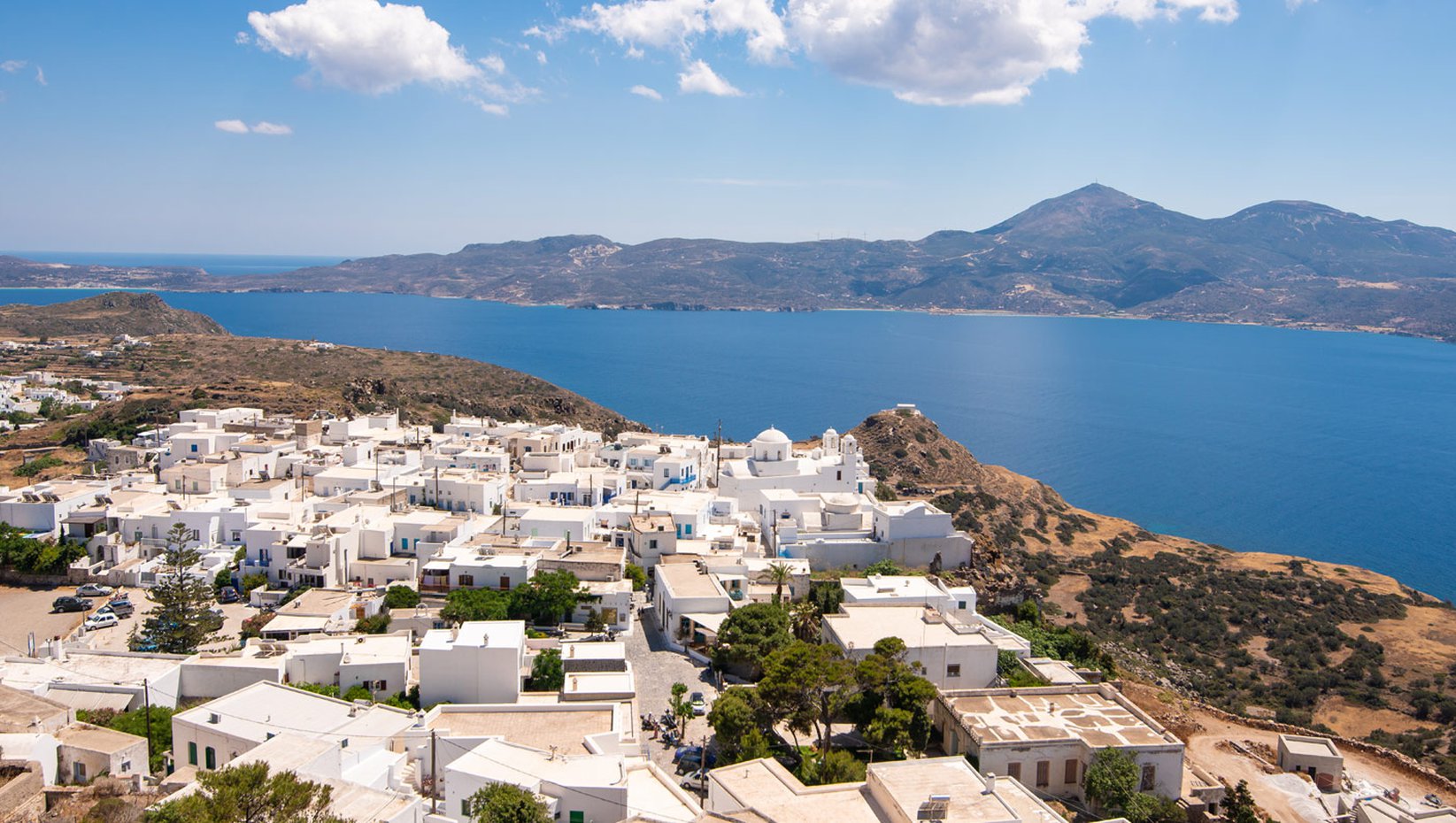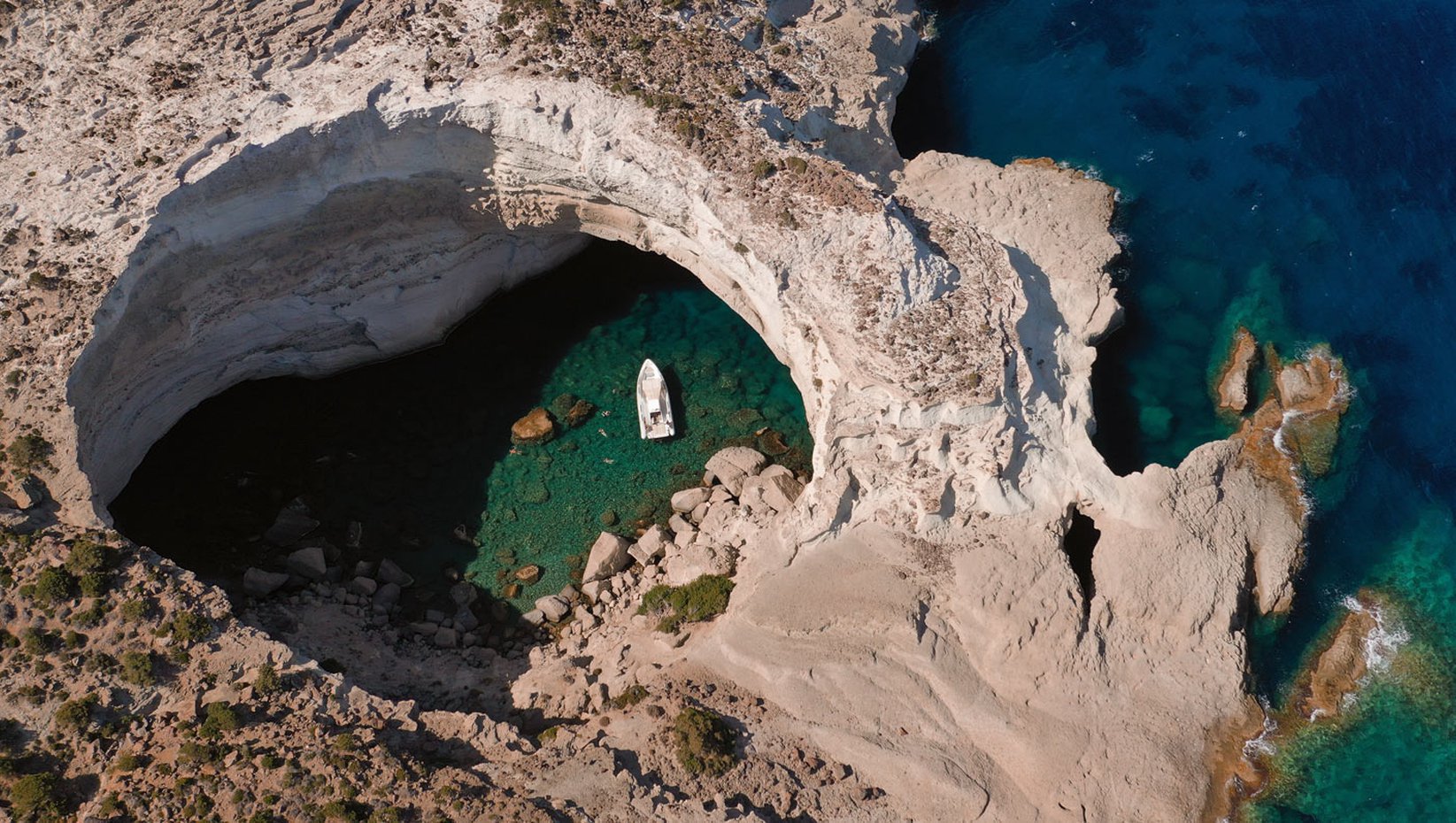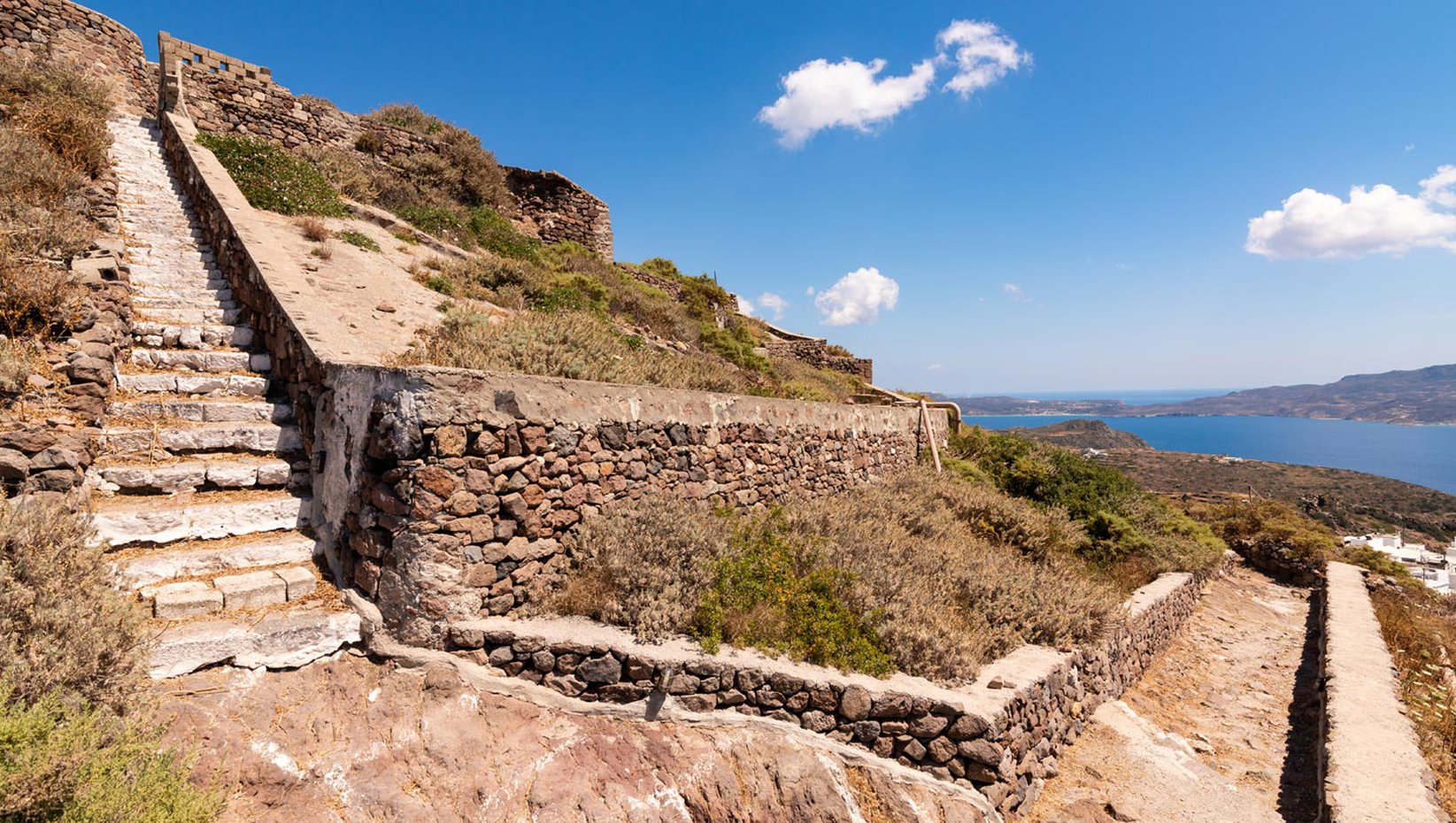Attractions

MILOS MINING MUSEUM
[9.7 km. away from Domus Litus]
The long mining history of Milos unfolds in the fascinating Mining Museum of Milos, in Adamas, through geological and topographic maps of the island & various exhibits, such as authentic tools, instruments, samples of minerals & rocks, images, and photographs. Also, on the first floor is hosted the "Collection of Obsidian Artifacts of Zafeiris Vaou", a folklorist and collector from Milos, which includes many representative artifacts of obsidian processing in Nychia & Demenegaki quarries. [Info: Milos Mining Museum, Adamas, Tel. +30 22870 22481]

SULFUR MINES
[12,9 km. away from Domus Litus on the east coastline
Milos is a volcanic island with great mineral wealth & mining activity that dates back to prehistoric times with the exploitation of obsidian [a black and very hard volcanic rock used to make weapons and tools], continues with the mining of kaolin and isoline in ancient years and reaches to the present day, with perhaps the largest bentonite mine in the world. It is also the only region of Greece in which pure sulfur was found in large quantities. The abandoned sulfur mine of Milos, which operated for over 80 years and stopped operating in the 1960s, is located on the east side of the island, in the bay of Paliorema, and is an important example of the industrial heritage of our country. The sulfur transport facilities, the rails, the wagons, the mining galleries, the ruined offices, the tools, and various scattered objects compose a ghost sight, where the sulfur and the rust have created an eerie scene. Upfront, there is the homonymous, unorganized beach, a small sandy beach with warm emerald waters.

PHYLAKOPI
[2.3 km. away from Domus Litus]
The prehistoric city of Phylakopi, with a history of over 1500 years, was one of the most important commercial and cultural centers and ports of the prehistoric Aegean and has traces of habitation from the Early Bronze Age [around 3000 BC] to the middle of Late Bronze Age [1250 BC]. Excavations have uncovered relics of two millennia, including several pottery vessels, clay, and bronze figurines [most notably the figurine of the Lady in Prison], Linear A plates, a rare gold mask, and the existence of cyclopean walls. Its prosperity was based on the exports of obsidian, which led to the complete commercial flourishing of Milos inhabitants. You can visit the archeological site and to learn about the opening hours you can call +30 22870 41290. Combine your visit with a dive in the neighboring beach with the caves of Papafragas.

ECCLESIASTICAL MUSEUM OF MILOS
[10.4 km. away from Domus Litus]
Adamas hosts another important museum of artistic heritage, the Ecclesiastical Museum of Milos, housed in the Holy Trinity's Byzantine church [842 AD]. During your visit, you will see rare samples of the religious, artistic tradition of the island, such as icons of the famous Cretan School from the 14th century, wooden carvings and iconostasis of the 17th century, epitaphs, silver goblets, and incense burners of the 18th century, an episcopal throne of the 17th century, and precious golden tributes of the faithful. [Information - Tel: +30 22870-22252/23993]

SYKIA CAVE
[31 km. southwest of Domus Litus]
Boat trips with organized excursions or sailing include a uniquely beautiful geomorphological wonder on the west side of the island, the sea cave, and the beach of Sykia. Passing the small entrance of the cave, only with a small boat or swimming, as the opening is shallow, you will be pleasantly surprised by the view of the sky and the rays of the sun entering the cave whose roof has collapsed and looks like a "hole" in the sky. Swimming on the small pebble beach with the crystal clear emerald waters, which will be revealed before you, you will feel an incredible feeling of rejuvenation.

LITTLE VENICE
[13.1 km. away from Domus Litus]
Klima is an incredibly picturesque fishing village with colorful cave houses carved into the natural cavities of the rocks, which are considered the most curious buildings of Cycladic local architecture. In these two-story buildings, the lower part were places of guarding fishermen's boats to protect the unstable weather, the so-called "Syrmata", and the upper floor were residences. From afar, it is very reminiscent of the district of Little Venice of Mykonos, so it bears the same name. Klima is located near the ruins of the old town of the first port of the island and in the two citadels, the hill of Profitis Ilias and Pyrgaki, where you can see parts of a temple of the Hellenistic and Roman period, parts of an ancient theater as well as the point in a field where Aphrodite of Milos was found in 1820. The original masterpiece may be in the Louvre Museum, but its exact copy is in the Archaeological Museum in Plaka.
Tiny fishing ports like Klima are Mandrakia [a fishing village with Syrmata and holiday homes, on the nearby beach of Sykia with gray pebbles], Firopotamos [a small seaside village with an organized beach], Fourkovouni, the quiet Empourios with the small port and a beach for swimming, next to the beach of Fatourena.



